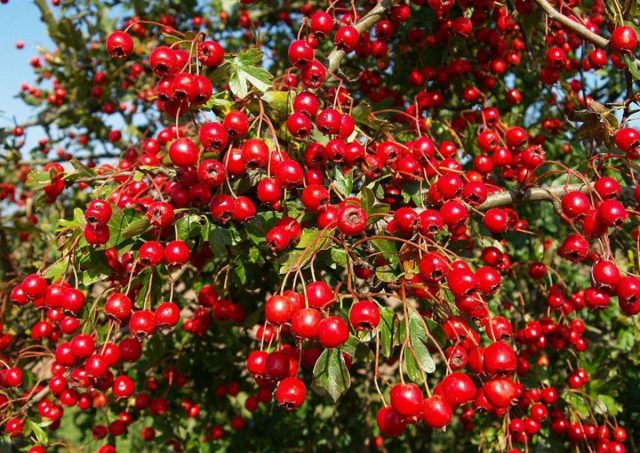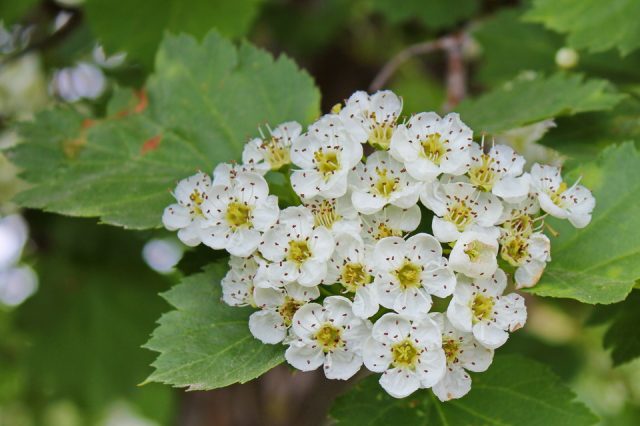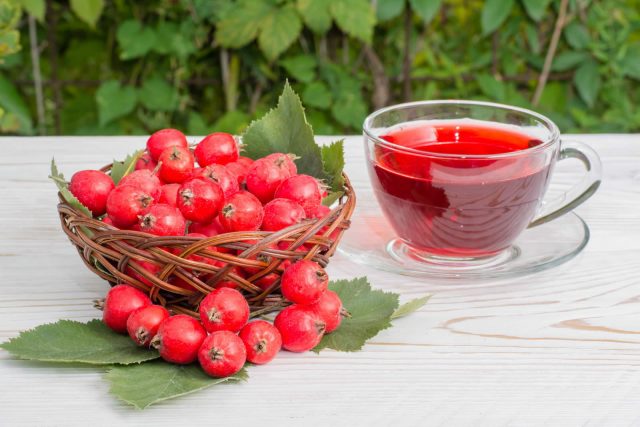Content
The blood-red hawthorn is widespread in the eastern part of Russia, Mongolia, and China. This plant grows wild in the forest, forest-steppe and steppe zones, in the floodplains of rivers. Like other types of hawthorn, it lives for about 300-400 years. Birds in forests in winter feed on its berries, as they are very useful. Observing wildlife has helped people to become interested in this plant, to study its properties. Siberian hawthorn is used in medicine and landscape design.
Hawthorn blood red: description
The plant got its name for the color of the fruit; it has other names among the people. For example, the description of Siberian hawthorn focuses not on the color of the fruit, but on the area of its growth. This is a small tree or tall shrub from 1 to 6 m, unpretentious in maintenance and care. It grows well and quickly, blooms profusely and bears fruit, if there was no spring frost. The shrub is frost-resistant and tolerates even severe frosts well, the only weak point is young buds.
Characteristics and appearance of blood red hawthorn
The trunk of a blood-red hawthorn, an ordinary dark or gray-brown color, up to 10 cm in diameter. Old branches can have a reddish tint, and young shoots are shiny, at first they are pubescent, and then they become naked. The trunk and branches are covered with hard, thick spines 1.5-4 cm long. On young branches, the thorns harden after leaf fall.
The leaves are ovoid or rhombic in shape. Their edge is unevenly serrated. Consists of 3 or 5 stipules. On short branches, they are 3 to 6 cm long and 2.5 to 5 cm wide. On older branches, they can be larger. They are located on a short petiole. The surface of the leaf plate is covered with a small pile, dark green on top and lighter on the bottom.
The root system of blood-red hawthorn is well developed. It often grows into plots. The roots are close to the surface and do not like high groundwater levels.
Description of blood red hawthorn fruit
Photos and descriptions of blood-red hawthorn clearly demonstrate its fruits, which gave it its name. Their color is blood-red, less often yellow-orange. In shape, they have an almost regular ball with a diameter of 8-10 mm, resembling small apples. When the hawthorn ripens, meat-red, almost all of the berry is occupied by bones. They can be from 3 to 5 with sizes up to 7 mm long and up to 5 mm wide. Mealy pulp. There is not much of it, but abundant fruiting compensates for this disadvantage.
They taste bitter, sour-sweet. When dried, they can be covered with a white bloom - crystallized sugar. Stored dry for up to 8 years.
Fruiting blood red hawthorn
The plant begins to bear fruit at 10-15 years of age, when it is sufficiently rooted and grows.It grows slowly, but it can live up to 200-300 years. The flowering shrub begins in May-June and lasts 1-2 weeks. The whole plant is covered with dense multi-flowered inflorescences. They are 3-4 cm long and 4-5 cm wide. Pedicels can be glabrous or fleecy. The petals are rounded. The flowers of the hawthorn are blood-red, white with a slight yellowish tinge, and quickly fall off. The stamens are long with a dark red tip. Siberian hawthorn has bisexual flowers. Fruits ripen in late September or early October. Harvesting can continue until the first frost.
Planting and caring for blood red hawthorn
This plant is unpretentious, but when growing and planting it, you must adhere to several rules:
- The Siberian blood-red hawthorn reproduces both by seeds and cuttings. For a hedge, seeds are planted in April, the plantings should be dense. For a free-standing bush, cuttings 10-12 cm long or seedlings are chosen. The time of their disembarkation is the beginning of spring or autumn. Pits up to 1 m deep are dug in advance, the bottom is covered with a layer of drainage, for example, broken brick and lime.
- For planting, sunny places are chosen so that the flowering is abundant. The soil must be fertile.
- Watering is carried out once a month, 10 liters per bush. In the dry season, they are watered several times a month. The soil must be moist. Above the root zone is mulched.
- Fertilized in spring with slurry for better fruiting.
- Regular pruning of shoots is required in early spring. You can give the crown a spherical or pyramidal shape. The blood red hawthorn is grown as a bush or tree.
Application of blood red hawthorn
In the works of the ancient Greek philosophers of the 1st century. BC BC and I century. n. e. the medicinal properties of the plant and methods of its use are mentioned. Many peoples believed that thorns protected from evil spirits, and decorated the entrance to the house with branches. Since the beginning of the 19th century, scientists have been actively researching the bush and have found it used not only in medicine, but also as a raw material for paint and material for breeding work. Toys and decorative household utensils are cut from wood. Today, the blood-red hawthorn is more commonly used as an ornamental tree or shrub.
In folk medicine
Flowers, bark and berries of the plant have beneficial properties. On their basis, teas and decoctions, tinctures are prepared. Siberian hawthorn is used for:
- normalization of the heart with angina pectoris, atherosclerosis;
- treating high blood pressure;
- as a means of calming the nervous system;
- insomnia treatment;
- normalization of the thyroid gland;
- increase in lactation;
- with diarrhea;
- liver treatment;
- treating fever;
- strengthening immunity;
- fight obesity.
Despite the fact that this is a natural raw material, the blood-red hawthorn has contraindications for use. You can not take drugs with it with low blood pressure, pregnancy, renal failure, arrhythmias, autism.
In cooking
In the photo, Siberian hawthorn is a bright and beautiful fruit. He found his application in cooking. The fruit can be eaten raw. They are also used for cooking compotes, jelly, preserves, making jelly, marmalade. Dried berries and flowers are used for brewing tea and coffee. In a crushed form, add to baking flour. The nectar of the plant is collected by bees - you can find hawthorn honey.
In landscape design
From a decorative point of view, the shrub attracts attention in the spring during the flowering period and in the fall when the berries ripen. This is the king of ornamental plants. Since 1822 it has been used to decorate gardens and parks.The blood-red hawthorn hedge looks very beautiful, it has dense shoots and sharp thorns that reliably protect against uninvited guests and animals. The shrub is valuable in that it requires constant haircuts and lends itself well to crown formation when pruned into different geometric shapes. It can even be grown as a bonsai.
Conclusion
The blood-red Siberian hawthorn is an ornamental and medicinal plant at the same time. It is easy to grow it on the site. One bush is enough to provide the whole family with fruits. It grows for a long time, does not like frost and flooding. Differs in high productivity. It takes root well in places far from its wild growth.
Testimonials











